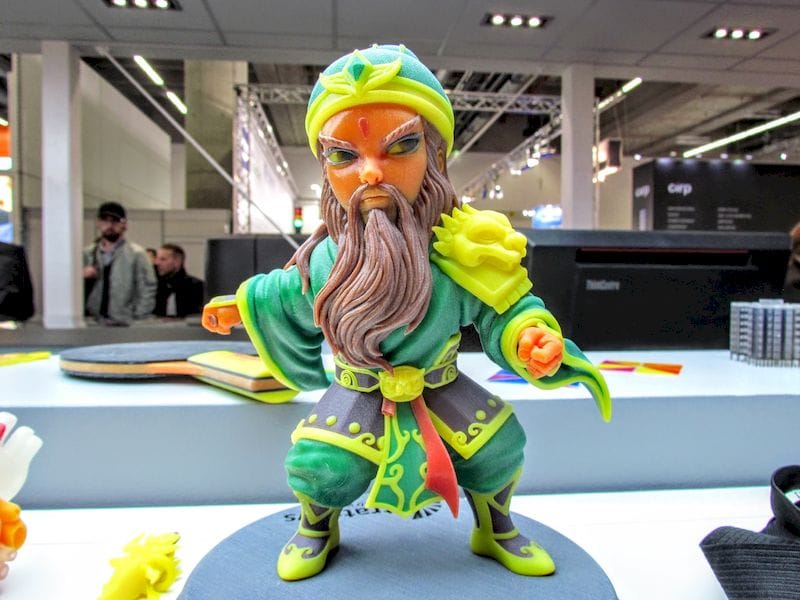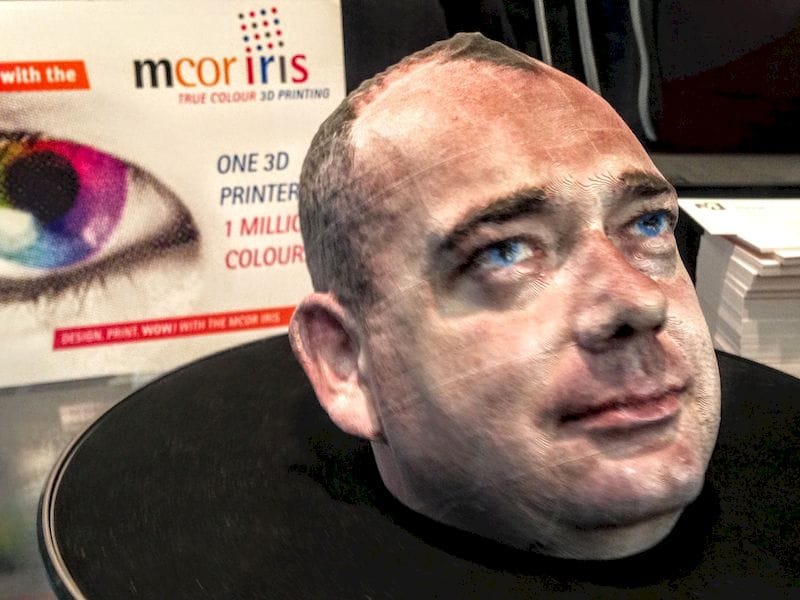
Most 3D printing is done without regard to color, but what happens when it is truly important?
In that case you’d likely be using one of several color-capable 3D printing processes and equipment. These have evolved over the years and while there still are not very many options, you do have some.
Some processes involve variations of the old ZCorp process, in which color ink is deposited alongside binder on a powder bed. Stratasys’ color process for their J750 involves inking liquid resin droplets before they are solidified. MCOR’s paper 3D printing process involves inkjet-printing the paper before it’s cut into the 2D shape of each layer. Finally, there are filament-based systems that mix a selection of CMYK materials to supposedly form any color.
And that’s my point here: supposedly.
The color prints from each of these processes are indeed full color, but they are far from perfect color.

I recall the days of early color computing, where it was amazing to get ANY color on a screen. Then things slowly got more refined as the professionals began to use the equipment. Soon you’d find monitors that were “certified” or you’d have to buy a “color calibrator” to help tweak that monitor to display the EXACT color you’re seeking.
This type of precision is required by graphics professionals worldwide, who spend considerable time selecting and devising color combinations for just the right feel, only to find their work spoiled by lousy 2D printers.

I think the same effect could happen in the world of 3D printing, and what triggered this thought was a recent comment by reader MeliesArt, who reacted to our post about XYZprinting’s color printer. The printer uses a process similar to ZCorp’s, and produces similar quality results. MeliesArt says:
I had my color dataSculptures (MeliesArt) printed for many years with ZCorp machines- but never got more than 60-80 distinguishable colours from Sculpteo,iMaterialize or Shapeways. Iris paper Printers do better, but have other disadvantages. With your authority, you might ask the color printer league to reprint one page of the Pantone Process Color Imaging Guide 1000 ( from OOGO to 1265C, just 14 colours).. and all of us will be very,very disappointed.
It’s unlikely the vendors would try this publicly, as the point made is probably correct: the color quality on most full color 3D printers may not be good enough to meet the needs of today’s artists and product designers. It’s a replay of yesterday’s graphic artist equipment scenario.
But we may hear more about this in coming years, as more 3D product designers adopt 3D printing. It may be that their complaints may drive the industry to develop much higher color quality standards such that the colors intended are the ones that appear on the final 3D prints.

